On the scientific essence of Dr. James Hansen's recent appeal
Why "a clique of climate scientists" who allegedly usurped the media, might not be ready to accept Dr. Hansen's conclusions about accelerating global warming, and why the biosphere is what matters.
Dr. James Hansen, one of the voices informing the society about global warming problems, in a recent public appeal co-authored by Dr. Pushker Karecha made the following strong statements (my emphasis):
Criticisms of the Acceleration paper in the media [a recent paper by Hansen et al. — AM] did not address the physics in our three assessments of climate sensitivity. Instead, criticisms were largely ad hoc opinions, even ad hominem attacks. How can science reporting have descended to this level? Climate science is now so complex, with many sub-disciplines, that the media must rely on opinions of climate experts. Although there are thousands of capable scientists in these disciplines, the media have come to depend on a handful of scientists, a clique of climate scientists who are willing, or even eager, to be the voice of the climate science community. But are they representative of the total community, of capable scientists who focus on climate science?
We have lamented[9] the absence of scientists with the breadth of understanding of say Jule Charney or Francis Bretherton,[10] or our beloved, sometimes crotchety, former colleague, Wally Broecker. However, the truth is that there are many scientists out there with a depth of understanding at least as great as the clique of scientists that the media rely on. Given the success of this clique in painting us as outliers, we are dependent on the larger community being willing to help educate the media about the current climate situation.
I will not use the word ‘clique’ below, as it appears to me that it has a negative connotation. I will replace it with the more neutral ‘core’ — ‘the core climate scientists’. Not being a native speaker, I did not consult ChatGPT on whether this phrase is good English, so if it does sound a little awkward please accept it as a human touch.
Many of the readers of this blog are, like myself, concerned about the fact that the biosphere is largely neglected in the on-going climate discussions. These readers may wonder why Dr. Hansen, who follows the same CO2-focused narrative as the core climate scientists, has been, in his own words, painted by them as an outlier.
This is because Dr. Hansen states that the climate sensitivity to increasing CO2 is higher than IPCC’s, while the core climate scientists have been rigorously advocating against climate models with a higher than IPCC’s sensitivity, and not without a reason. Here I will share my perspective on this controversy and how it may relate to the recognition (or continued neglect) of a major role of the biosphere in the on-going climate destabilization.
Mistreatment of Hot Models?
Everybody interested in climate problems should know that climate models differ greatly in their projections of how much the planet could warm if the atmospheric concentration of CO2 doubled.
The above graph (Fig. S7 from Zelinka et al. 2020) shows how different global climate models developed in different research centers around the world project planetary warming corresponding to doubled CO2 (ECS stands for Equilibrium Climate Sensitivity). Different colors represent relative contributions from different processes. Blue colors stand for the radiative forcing contribution from increased concentrations of greenhouse gases (CO2 and water vapor). Red colors are the albedo changes. Green colors are changes in the lapse rate and relative humidity. Yellowish colors represent cloud impacts. TR and EX mean tropics and extratropics. Models in the first five-six top rows were termed ‘hot models’, as they project much more warming than the others.
For example, model INM-CM4-8, the last row in CMIP6, predicts the lowest temperature increase from CO2 doubling, around 2 K. This is, by the way, the model developed in Moscow University in Russia. This model has a tiny, and negative, cloud feedback. This means that as the planet warms, clouds in this model change in such a manner as to offset (a miniscule part of) the warming. INM-CM4-8 also has a very small contribution from changes in albedo.
Conversely, model CanESM5, the first row in CMIP6, coming from Canada, projects a nearly 6 K warming for CO2 doubling, with a large part of this response due to the destabilizing cloud feedback. Such strong feedbacks were missing in the previous generation of climate models (cf. model CanESM2 in CMIP5). The appearance of this strong cloud feedback in some of the CMIP6 models resulted from intense work by researchers striving to represent cloud response to temperature changes as robustly as possible, also using the new data unavailable for the models of the previous generation.
Having described clouds to the best of their capacity, and having changed the models’ codes accordingly, the researchers ran simulations with increased CO2 and found that their models now predict much more warming than before.
After many discussions not all of which can be traced in the literature, the core climate scientists came to the conclusion that such models can’t be true. Accordingly, in the IPCC report their contribution to the climate projections was downplayed.
Dr. Sabine Hossenfelder even made an angry video about this suspicious procedure of a posteriori excluding the most alarming results that did not conform to expectations. More recently though, she softened her emotional stance and suggested that the climate scientists could have thrown away the hot models just because they were all humans and wanted “to get rid of bad news as much as everyone else.”
Sympathetic as it is, that would be a harsh diagnosis for the core of any scientific community, but I think that the procedure of downgrading the hot models did have a certain scientific rationale behind it.
Describing past and present
This procedure can be read about, for example, in the paper by Hausfather, Z., Marvel, K., Schmidt, G. A., Nielsen-Gammon, J. W., & Zelinka, M. (2022). Climate simulations: recognize the ‘hot model’problem. Nature, 605(7908), 26-29.
Going back in time, we note that this paper was published in Nature on May 04, 2022, when the warming anomaly of 2023 was not yet on the horizon. (Such a paper would hardly be published in early 2024, when it became clear to many that we’re in ‘uncharted territory’). But back then in 2022, the paper opened with the following directive:
The sixth and latest IPCC assessment weights climate models according to how well they reproduce other evidence. Now the rest of the community should do the same.
As an opener, the first sentence is a little puzzling. One can infer from it that there is ‘evidence’ and ‘other evidence’, and that the latter is presumably more important than the former when evaluating a particular model, even if the former is not specified. After reading the paper, one understands that the ‘other evidence’ is the historical climate changes that the hot models could not properly reproduce.
Looking at how the global mean surface temperature was changing in parallel with increasing CO2 concentration, we find that this change was not uniform.
The global mean surface temperature anomaly versus natural logarithm of CO2 concentration in 1850-2024. Data from https://ourworldindata.org/grapher/temperature-anomaly and https://ourworldindata.org/grapher/co2-long-term-concentration. The so-called global warming hiatus around the 2000s is marked.
We can see that sometimes the global temperature did not react to CO2 accumulation and sometimes it made relatively big leaps for nearly no CO2 change. Generally, there was less warming between 1900 to 2000 than between 2000 and 2024, even as in the former period the relative CO2 addition was larger. To account for this non-uniformity, different models use different tricks within the relatively broad uncertainty corridors of various data. Two main degrees of freedom are aerosols and the so-called “pattern effects”.
The argument against hot models was that they don’t adequately describe the past temperature changes. As we noted,
Global climate models with an improved representation of clouds display a higher sensitivity of the Earth's climate to CO2 doubling than models with a poorer representation of clouds. This implies more dire projections for future climate change, but also poses the problem of how to account for the past temperature changes that are not affected by the model improvements and have been satisfactorily explained assuming a lower climate sensitivity.
Below is a comparison of how well models with different climate sensitivities describe the temperature trend between 1980 and 2014.
We can see that the hot models (with Equilibrium Climate Sensitivity exceeding 5 K) perform rather poorly. This is the ‘other evidence’ to which Hausfather et al. 2022 referred to.
At the same time, there is also evidence in favor of hot models. For example, they do better than others in describing the correlation between changes in precipitation and temperature:
And, of course, hot models do better in describing clouds, as it was a major improvement that their developers had tried to implement:
I built the above three graphs using the results of Brunner et al. 2020, Yang and Huang 2023 and Kuma et al. 2023. Please consult original references for details.
To summarize, core climate scientists decided to downgrade the hot models having assigned more weight to the evidence that testified against the hot models than to the evidence that testified in their favor.
Too Hot Even for the Hot Models
I should emphasize that the heat anomaly of 2023 and 2024 was not predicted by any climate model, either hot or cold. But the fact that this heat anomaly did occur gives more weight to the models with higher sensitivity and makes the task of urging the community to downgrade them more difficult.
What is more important from the scientific viewpoint, is how to explain what’s going on. Why is this so important? Unless external causes of this recent temperature anomaly are identified, we may be dealing with a self-reinforcing process — for example, of reduced cloud cover causing more warming, this warming causing even less clouds and so forth until something truly ugly happens to our planet. But, if so, such a process could be started by many factors and does not necessarily need CO2 to kick off. For example, deforestation-induced reduction of evapotranspiration in the Amazon is associated with extreme heat events. This alone could trigger the warming that could then self-amplify via cloud (or some other) feedbacks.
Going a step further, if such a self-reinforcing destabilizing feedback is present in our climate system, are our interpretations of past climate changes at all correct? Modern climate models are all made stable, i.e. they don’t have any runaway processes encoded. For any CO2 concentration there will always be an equilibrium, steady-state planetary temperature. If the reality is different, and the climate can be unstable, then with the stable climate models we have been mostly wasting our time studying incremental things and overlooking a major climate danger.
Let us also pay attention to the following twist. Media reported that the recent warming anomaly was deciphered as caused by reduced cloud cover. However, in the current climate narrative, cloud cover change is a feedback to the temperature change caused by increased CO2. It is not an independent cause of temperature change. If it were a cause, and given that clouds account for a major part of the warming, then it is possible that most warming is due to something happening with clouds, while CO2 remains just an important addition to the cloud-mediated climate change processes.
In other words, for the CO2-focused narrative it would be very important to find arguments against a self-amplifying feedback. Ironically, Dr. Hansen, while painted as an outlier, offers a strategic solution that could save the status quo. He proposes that the climate sensitivity is higher than IPCC’s but that it is constant. No self-amplification. The good old equilibrium sensitivity.
To explain the smaller temperature changes in the past, Dr. Hansen proposes that the aerosols should have been cooling the planet more than the core climate scientists currently believe:
IPCC’s best estimate of the aerosol cooling effect is a substantial underestimate, especially in the period 1970-2010.
Sacrificing the aerosols could save the whole narrative. (In this sense, ‘acceleration’ of global warming in the narrative of Dr. Hansen is a little confusing. He is not speaking about a self-amplifying warming. In Dr. Hansen’s opinion, much of the ‘acceleration’ is caused by the recent restrictions on aerosol emissions from ships.)
However, either the evidence in favor of a not-so-strong cooling from aerosols is more robust than Dr. Hansen believes, or the associated reputation investments have been too high, but apparently the core climate scientists are unwilling to sacrifice the aerosols.
If one is not ready to radically re-interpret how aerosols impacted past climates, how can one explain what’s happening? Back then in 2010 (coincidental with Climategate) there was a similar problem. Climate science could not explain the lack of global warming as it stalled for about a decade. (And, in the words of the core climate scientists themselves, it was a travesty that they couldn’t.)
That hiatus problem was resolved by involving the ocean which was summoned to absorb the “missing heat” and thus made responsible for the lack of warming. Logically, one could now do the reverse and find out that the ocean has suddenly brought much of its vast heat stores up to the surface.
Another opportunity for the core climate scientists would be just to wait and see, maybe the warming will pause for yet another time. Observations indicate that the Earth’s energy imbalance has recently somewhat diminished. We have also suggested that if the recent temperature anomaly was facilitated by the biospheric breakdown that occurred in 2023, the anomaly may ease as the ecosystems (partially) self-recover.
While waiting, one can argue about the need for more data, which is always true.
The biospheric outlook
If the self-amplifying warming exists and has started in earnest, what any of us is going to do may no longer matter much. However, as I hope, if the planet is only on the verge of losing the equilibrium and still can be stabilised in its current state, it is desirable to understand what has contributed to the stability and what is contributing to its loss, such that the destabilizing factors can be minimized.
Again, by the loss of stability we do not mean such global warming that is ultimately set by how much CO2 is in the atmosphere, but a self-amplifying climate change (warming or cooling) which magnitude and rate are not set by CO2 but determined by the intrinsic dynamic properties of the Earth’s system including the biosphere.
Slide from our EcoSummit presentation in December 2024
The increasing climate sensitivity to CO2 increment and accelerating climate destabilization can be associated with the degradation of Earth’s natural ecosystems. Very schematically, suppose that there is a natural forest that generates low-level clouds in response to increasing temperature. Like an air conditioner programmed to maintain a set temperature, the forest can generate more cooling clouds as external forcing increases. In this case, we would observe a nearly constant temperature despite rising CO₂ levels.
However, if the forest is disturbed by logging or burning or replaced with a plantation—disrupting its ability to stabilize the water cycle and making it more vulnerable to drought—its capacity to generate climate-regulating clouds is impaired. This can lead to an abrupt rise in air temperature, unrelated to concurrent external forcing such as rising CO₂ levels.
Any control system increases its feedback as the perturbation grows. Therefore, as the climate destabilization deepens, the remaining natural ecosystems should be exerting an ever increasing compensatory impact per unit area. In other words, the global climate price of losing a hectare of natural forest grows as the climate situation worsens.
This is not just about the forests, but also about the cloud-generating capacity of marine ecosystems that have been likewise plundered and poisoned by us at a growing rate in recent decades. Protecting the biosphere now may be our best strategic option. Fostering “green fuel” large-scale deforestation projects like the one in Indonesia is equivalent to asking for another half-degree global temperature spike to show up soon. It is not prudent to mess with energy flows like evapotranspiration along the equator.
Community outlook
Dr. Hansen appeals to the broader community who should have an understanding “at least as deep” as the core climate scientists. It remains unclear, however, how those additional scientists with an equally deep understanding of climate problems are going to argue with other deeply understanding scientists. Maybe they will support the core climate scientists and not necessarily Dr. Hansen. We should see.
My respectful questions to Dr. Hansen would be: would you be willing to contribute to opening the climate discussion wider than just including your own team’s interpretation of what’s happening? Is this discussion going to be open only for people “with a deeper understanding” of all climate issues, whoever defines that deep understanding? Or is it possible that some critical pieces of evidence can be brought in by people who may not be equally informed in all areas of climate science?
Currently if a person does not know something in the quite complex physics of the greenhouse effect, such a person stands a non-zero chance of being ridiculed and excluded from climate discussions. But if a person is ignorant about the processes in the biosphere, it is just fine, such a person faces no constraints in submitting authoritative opinions about our planetary perspectives. And we are all ignorant about these processes — as Bar-On et al. 2025 have just shown, after decades of research, we don’t even know where the carbon goes.
With regard to the biosphere, one’s experience of natural ecosystems sets a certain standard of what complexity is. It might be easier to brush off the biosphere trusting a model that says that the biosphere does not matter for a modeller who has never experienced the complexity of a natural forest. Depauperacy of nature experiences can be subtly influencing thinking patterns. In this situation opening the dialogue more widely to include and tolerate all people with a good will to improve the situation could be a good strategy. Probably Dr. Hansen, having experienced how unproductive excluding others’ opinions as outliers could be, could now be in a unique position to facilitate such a more inclusive discussion, for the sake of preserving the biosphere.




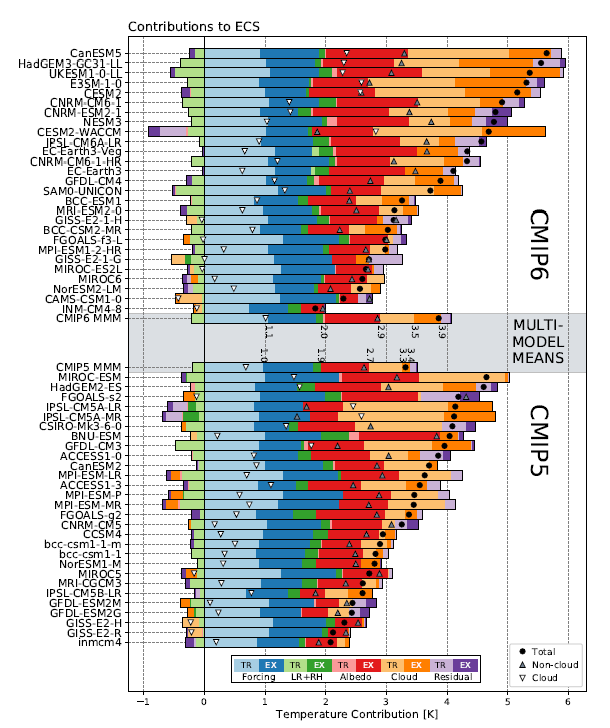
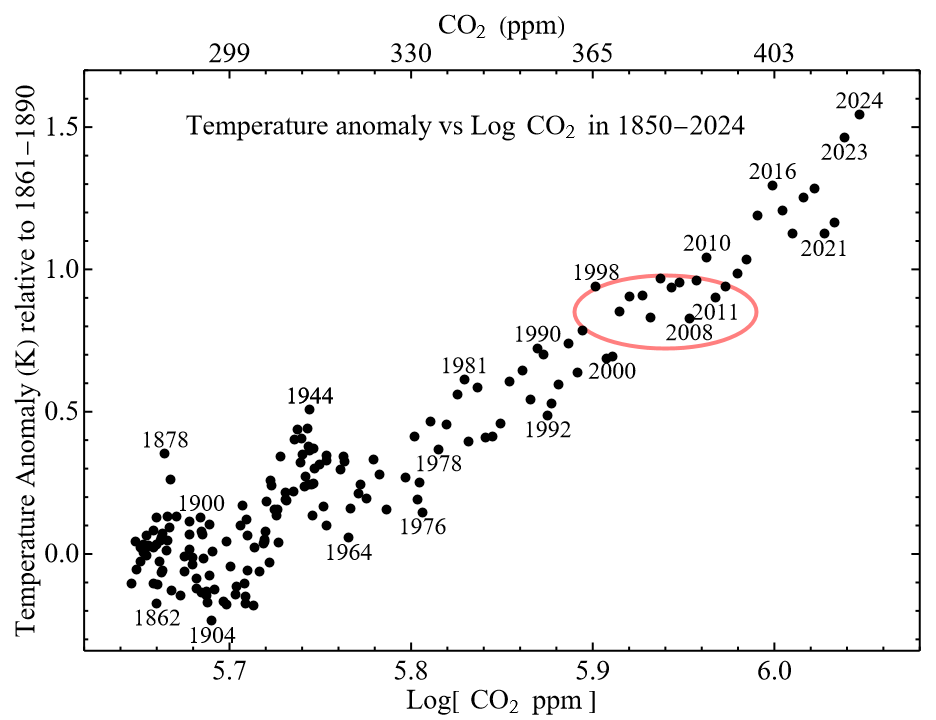
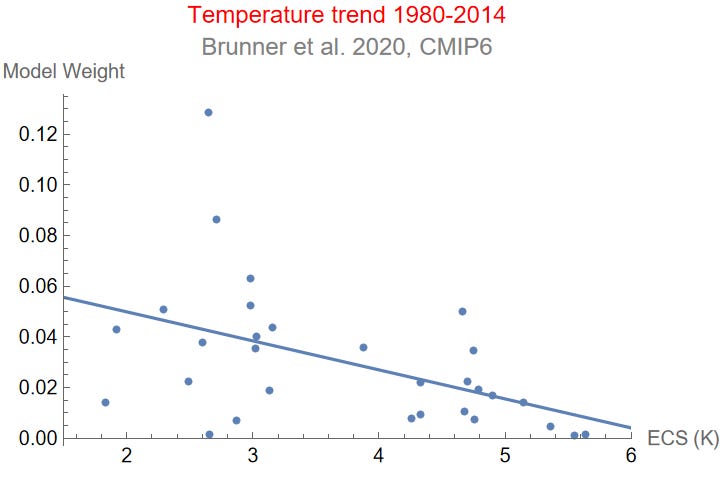
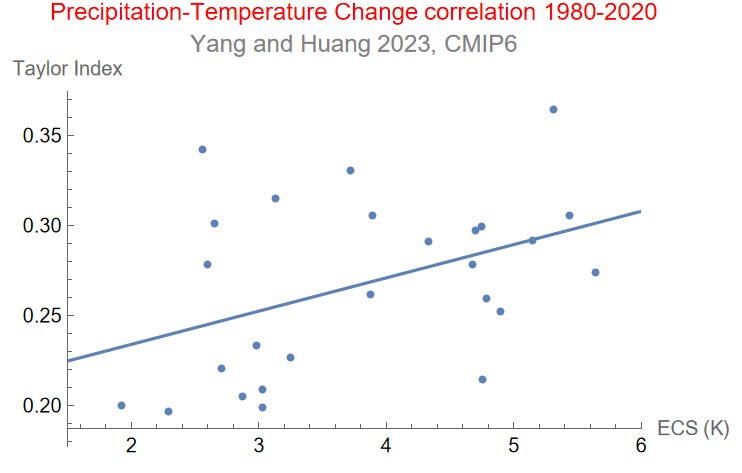
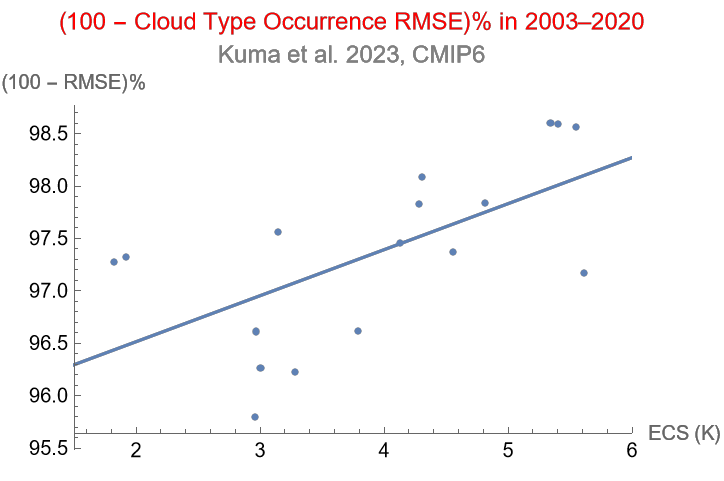
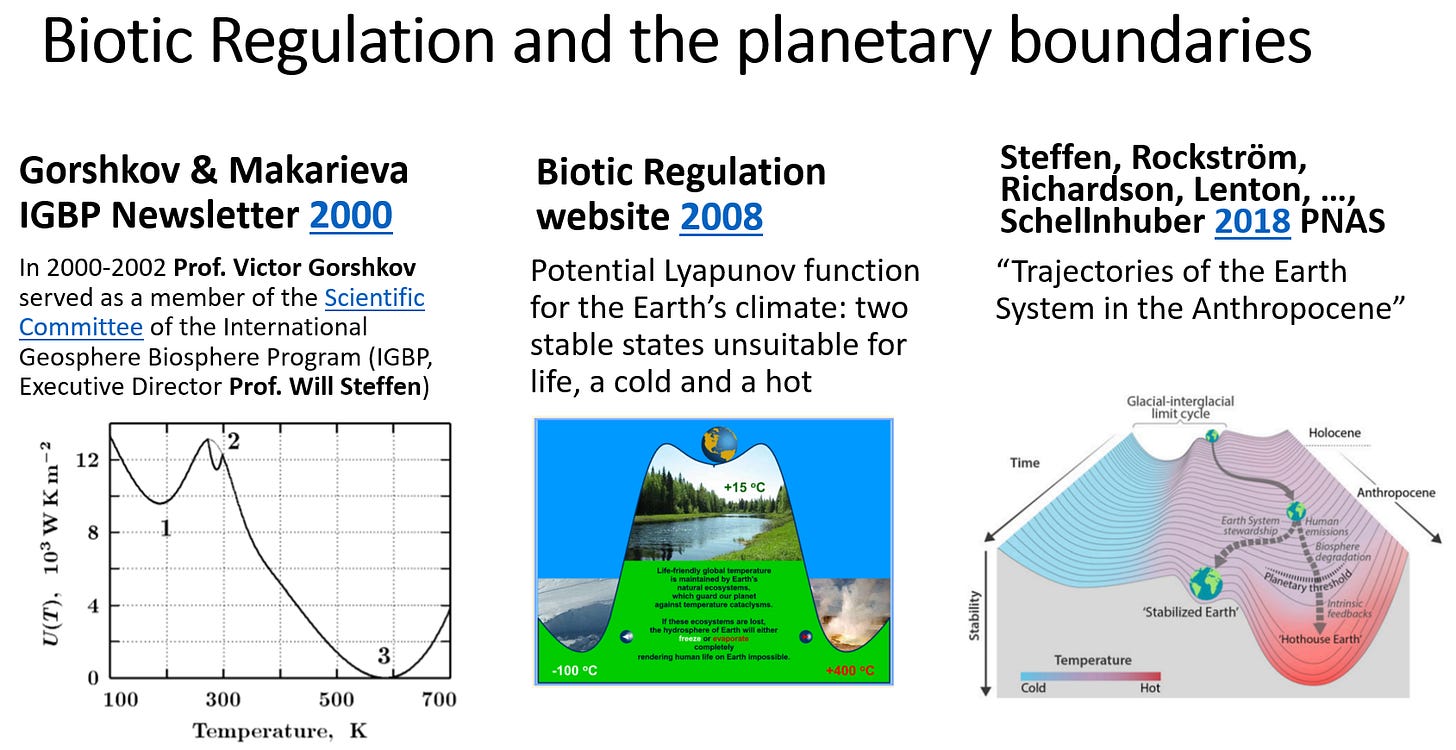
Thank you for this exciting discussion which stretches my ability to fully understand all the nuances. And thank you for that link to James Hansen's paper! You suggested something along the lines that the ocean gave up some of it's stored heat. I've read the solar imbalance heat (which is accelerating alarmingly) is stored in the top 200 meters. I remember reading in my formative years about Beebe and Barton in their Bathesphere 1930-1934 discovering that it it completely dark at an ocean depth of 500 ft (152 meters). Is the temperature (and therefore density) flux well mapped today? Could this lowering of density imply that the vast ability of the deep ocean to moderate surface temperatures won't be available for a long time, time we do not have? Perhaps these are fuzzy concepts but it seems we need to have some way to model how the increasing solar energy imbalance gets "stuck" in the top layer of the oceans leading to rapid increase in tropical air temperatures and storms. Who is studying this?
Aerosols includes cloud formation and cumulus cloud formation that includes small water cycles that is not as reductionist as the carbon-focused talk. Aerosols are part of more holistic processes that people must also act to defend and preserve.